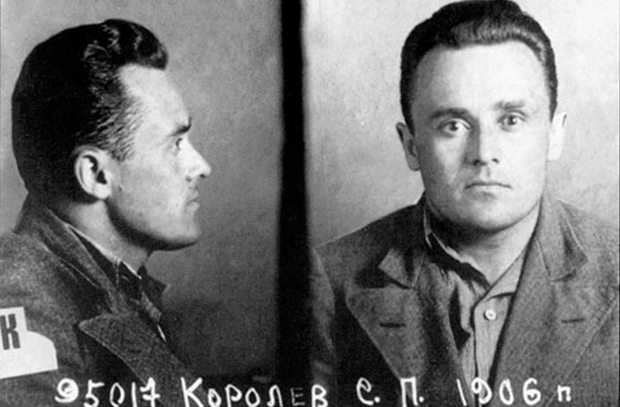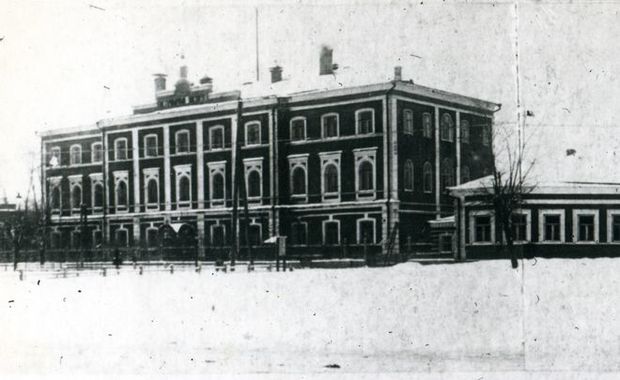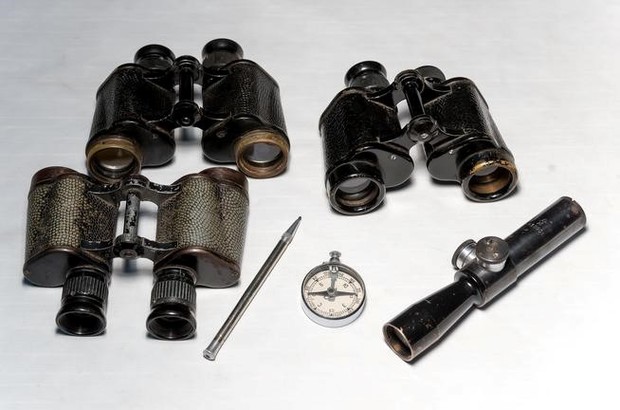Cosmonautics Day: what contribution Kazan made in space exploration
Tatarstan and Kazan have a direct link with space exploration. Great constructors Glushko and Korolev worked out schemes of rocket engines in Kazan. Moreover, factories producing the most important details for spacecraft are situated here. Ravil Veniaminov, a regional ethnographer, told about it in a column specially written for Realnoe Vremya.
'Constructors' jail'
Our city is so closely linked with space exploration that initially it is difficult to decide what to start this big topic with. It seems that the date of inception of the specialized Experimental Design Bureau (EDB) for the production of liquid propellant rocket engines in Kazan in 1940 can be supposed to be a starting point. This EDB, which was created under NKVD, moved here from Tushino Aviation Plant (Moscow Oblast). Imprisoned constructors were the workers headed by a 'con', future academic, whose name will be used as a street name in Kazan, Valentin Glushko. Another future academic Sergei Korolev joined him in 1942, who, curiously enough, was lucky because in 1940 he did his time in Tupolev EDB, not Kolyma, working on construction of the future Tu-2 bomber.

In Kazan, Glushko and his cell mates were accommodated in the plant management area, which united two neighbouring factories at the same time: Aircraft Plant No.124 and Engine Building Plant No.2. The works on reaction engines RD were fair to middling. But then Korolev came from his Moscow 'constructors' jail' and started to work with his characteristic energyon RD-1 unit for Pe-2 bomber, which was also produced here. In 1943, the reactive bomber successfully flew, and in 1944, the constructors were freed.
Borrowed from the Germans
A very valuable exhibit – miraculously spared model of RD-1's engine in the Glushko Plant Museum.
So, it can be supposed that Kazan became one of the main stairs on the way of the great constructors Korolev and Glushko. They gained a priceless experience here, the very 'the son of difficult mistakes' that Pushkin wrote about. The work on liquid propellant rocket engines for aviation that had a 300 kg thrust was a dead end of the development, and only information about German rocket engines whose thrust was 27 tonnes changed the ideas about the future of space exploration. Now it was possible to think about the space.
In 1945, Glushko and Korolev went to Germany to acquaint with achievements of German rocket builders and created R-1 Soviet rocked based on V-2. Korolev did not return to Kazan any more, while Glushko came here, visited Kazan Aviation Institute and Kazan Motor-Building Industrial Union (former Plant No.27/16). In the Glushko Plant Museum, He was shown a very valuable exhibit – miraculously spared model of RD-1 engine. It is possible that this engine was built by the future constructor general and was a kind of baton in a long row of cosmic 'flaming engines'.
Kazan aviation in aid
Kazan Aviation Factory and Kazan Motor-Building Production Union did not talk about rockets and space any more, but indirectly they did it in 1980. During the Perestroika, Soviet construction had an idea to use a gigantic capacity of the biggest military aircraft in the world not only for military but also for peaceful purposes. Tu-160 was designed for a payload equal to 40 tonnes. Elaboration of Burlak Aviation and Space Complex started in 1991. This two-stage rocket for Tu-160 was lifted by the aircraft to a high altitude, started there and reached cosmic altitudes. Estimates showed that this air launch let economize than the usual land launch. Moreover, the aircraft could take off from ordinary airdromes, not cosmodromes. There was a great number of variants to use Burlak – from satellite delivery to anti-satellite operation. A scale model of Burlak together with Tu-160 was showed many times in different aviation shows in the 1990s, but there were no real flight testings for a banal reason – there was no money. So, White Swan did not become a cargo 'horse'.
One our aviation factory more – Helicopter Factory – also was or, more precisely, still is linked with space exploration because of its end product. On 9 March 1960, people of Tatarstan could be eyewitnesses to the work of Kazan products in Zainsk District. When Vostok spacecraft landed with a passenger on board, Mi-4 helicopters, those that were produced in our Helicopter Factory, were sent to search for it. And the capsule returned from space also was delivered by Mi-4 for loading to An-12. The photo proves it. 56 years have passed since this moment, but the search for returning spacecraft has being carried out by Kazan vehicles during all this time, now it is done by Mi-8 helicopters and their modifications.
'Space' factories
If aviation factories of Kazan have an indirect connection with space, we have enterprises whose production is directly delivered to the outer space. We speaking about Elecon, Electropribor and Kazan Optical and Mechanical Plant. The very names beautifully tell that specialists are working there. Elecon is electric contacts. Which modern aggregate, mechanism or device, especially connected with space, can work without these small but endlessly important details? Earlier this factory was called 7th Plant, then Radio Component Plant and now it is Elecon. Soyuz, Proton, Zenith civil rockets, military Topol rockets and other means of nuclear deterrence won't be able to fly without Kazan electric connectors. Kazan connectors worked and have been used for our satellites, orbital and interplanetary stations, that is to say, everywhere where electric signals are needed.

In 1958, the plant was given a task to produce equipment for telemetry and control of the trajectory of a spacecraft. Then a work on equipment for manned flights started, the nomenclature of articles constantly expanded, which required a hard and responsible work of its specialists. The plant had a triple-shift work at times. Nowadays Elecon has orders and confidently looks to the future.
A no less difficult and energy intensive production passes through the gates of Electropribor. A large number of different sensors used in aviation and space, various electric engines, stabilizers, temperature regulators and other devices are produced there. It is impossible to use high-precision equipment safely without them. What is more, once there was created a gyro stabilized antenna for spacecraft docking.
In the Soviet era, Kazan Optical and Mechanical Plant was widely known as a producer of binoculars. A few people know that the activity of the plant is mainly connected with aviation or, more precisely, with aviation cameras. But due to space exploration, new articles were added to the nomenclature of the plant. In particular, optical viewing device was produced for Salyut space station, ultraviolet telescope was created for Soyuz-13 spacecraft, and one telescope more was installed at Salyut station. A production of Pion optical instruments was designed for our cosmonauts. If the citizens of Kazan knew something about Kazan Optical and Mechanical Plant, there was no information about State Institute of Applied Optics in the Soviet period. Only nowadays it became known that State Institute of Applied Optics deals with both aviation and space. Infrared equipment is the specialization of the institute.

In the 1970s, Kazan infrared equipment was in space. Not limiting to infrared equipment, the institute created photometric and other devices for many types of space equipment – from satellites to space stations. But today thermographic cameras are the core business of State Institute of Applied Optics.
Undoubtedly, I would like to tell about space activity of Kazan enterprises in detail and in colour, but due to privacy and limitations, we cannot show and tell you about everything in detail. We hope that time will come, and we will know how Kazan conquered the space.